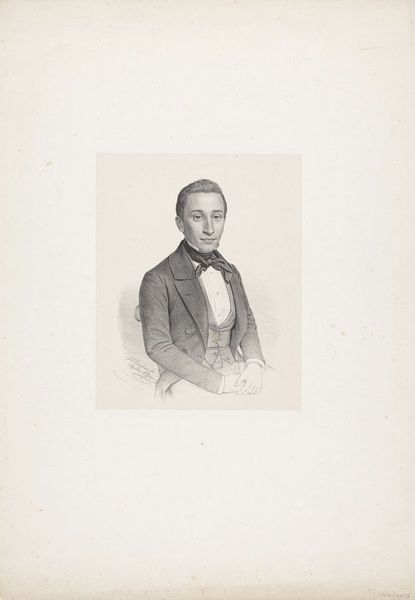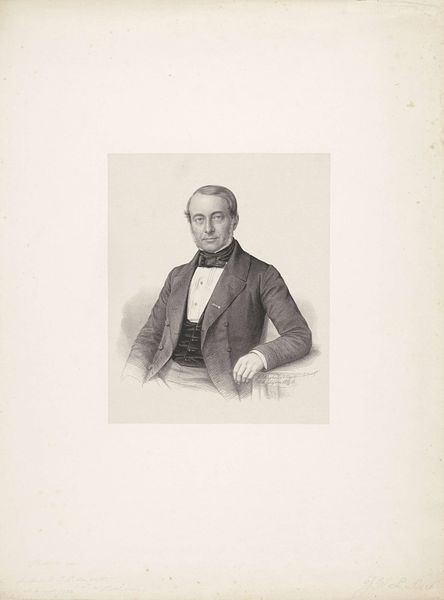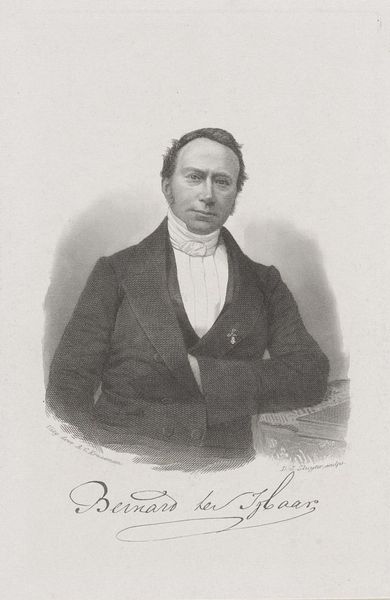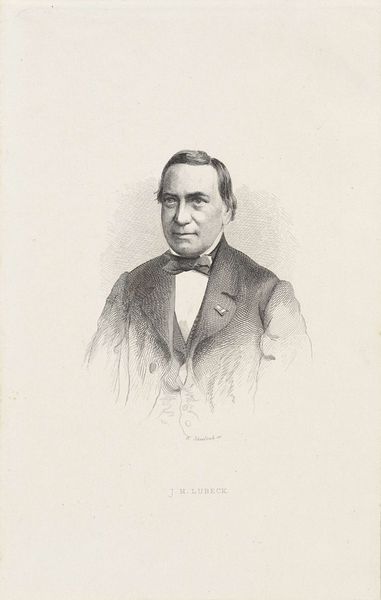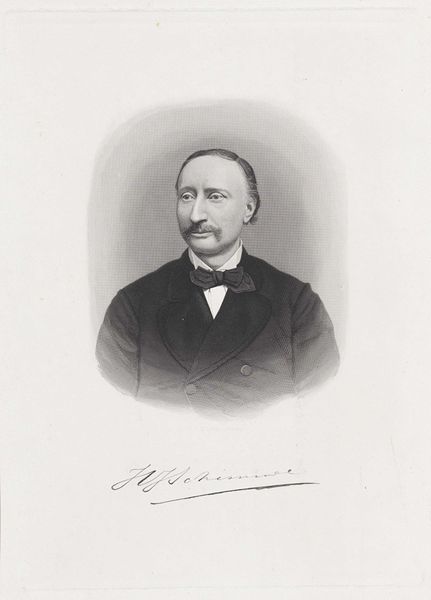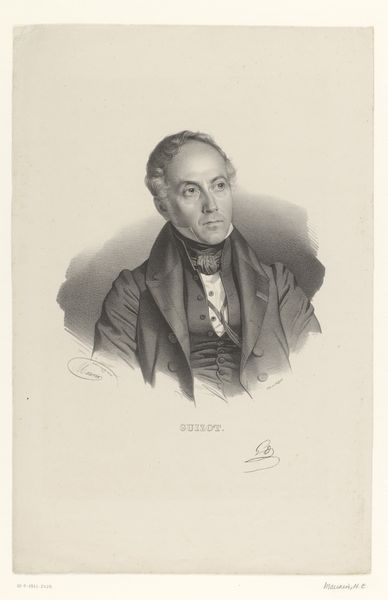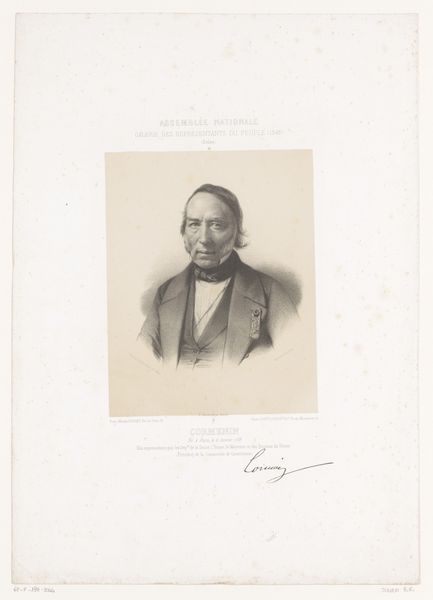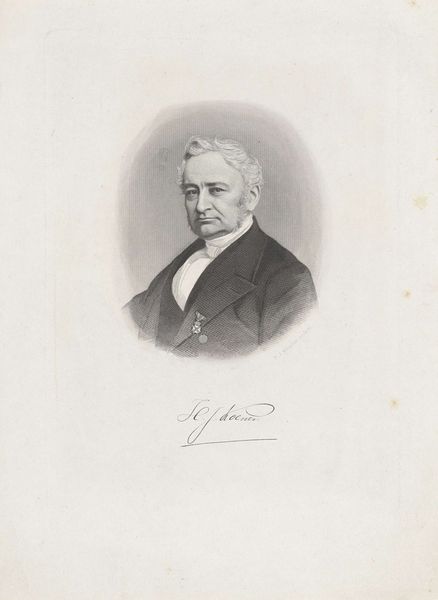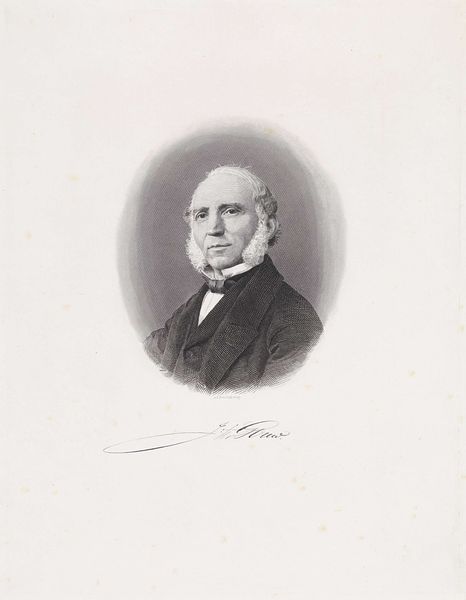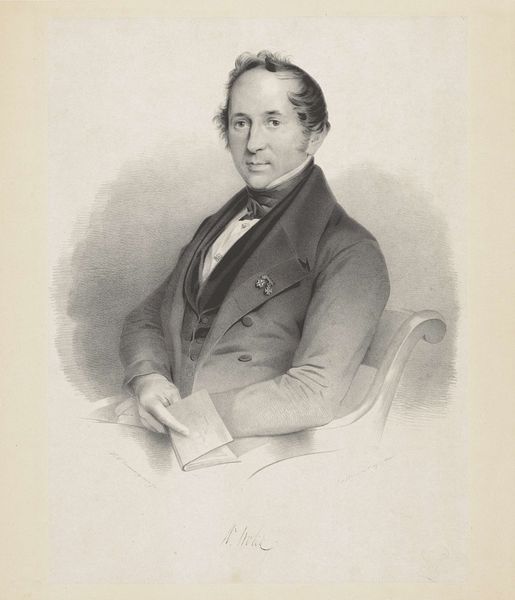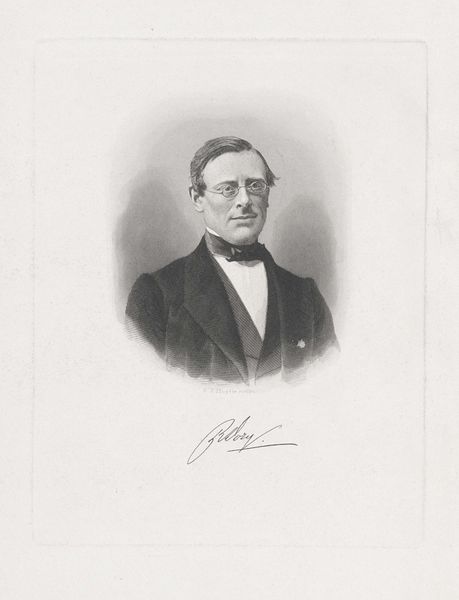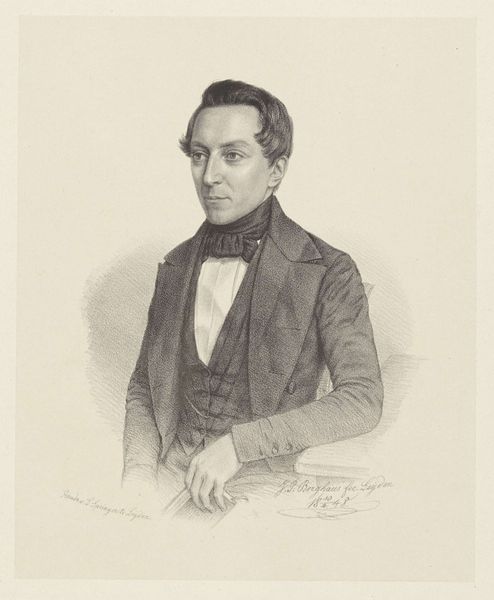
drawing, pencil
#
portrait
#
pencil drawn
#
drawing
#
pencil sketch
#
charcoal drawing
#
pencil drawing
#
pencil
#
portrait drawing
#
academic-art
#
realism
Dimensions: height 172 mm, width 112 mm
Copyright: Rijks Museum: Open Domain
Editor: So, this is Dirk Jurriaan Sluyter’s "Portrait of Hendrik Jan Schimmel," created sometime between 1850 and 1886. It’s a pencil drawing at the Rijksmuseum. I’m struck by how stern he looks; it’s a very formal and imposing portrait. What symbolic meanings might be embedded in an image like this? Curator: Indeed. While seemingly straightforward, consider the semiotics of portraiture itself in the 19th century. The depicted individual wants to project status, intellect, morality through pose and attire. Observe how the lighting emphasizes his brow and eyes, archetypal markers of intelligence. Ask yourself what societal values are mirrored back to its audience? Editor: I hadn't considered the gaze. What does it mean? Curator: The steady, direct gaze transmits confidence and authority, of course. The very *act* of commissioning a portrait signals a desire for legacy, immortality via representation. The portrait literally "re-presents" the person, so there is intentional manipulation to consider, perhaps even to mask or create a desired perception, don't you think? Editor: Definitely, so it's not necessarily a faithful depiction. It also speaks to their social status, being able to afford a portrait. It's interesting how portraits have always been vehicles for certain statements. Curator: Precisely. So, in effect, these portraits are encoding powerful societal ideals for future interpretation, far beyond any "likeness." What do you think such portraits like these reflect to us now? Editor: I now see it almost as a preserved piece of history, not just a likeness but also a statement on the subject's aspirations and position, and our own cultural values surrounding the portrayed. Fascinating! Curator: Yes, viewing the subject, technique, and intention embedded with visual language reveals volumes beyond the surface. It is the iconographer’s exciting role.
Comments
No comments
Be the first to comment and join the conversation on the ultimate creative platform.
